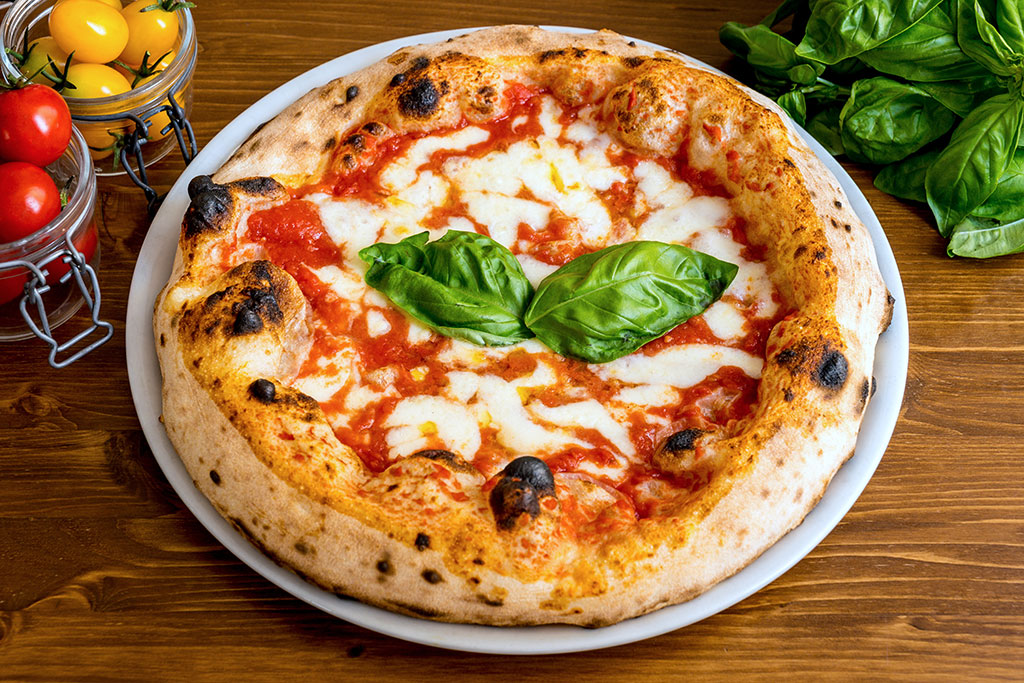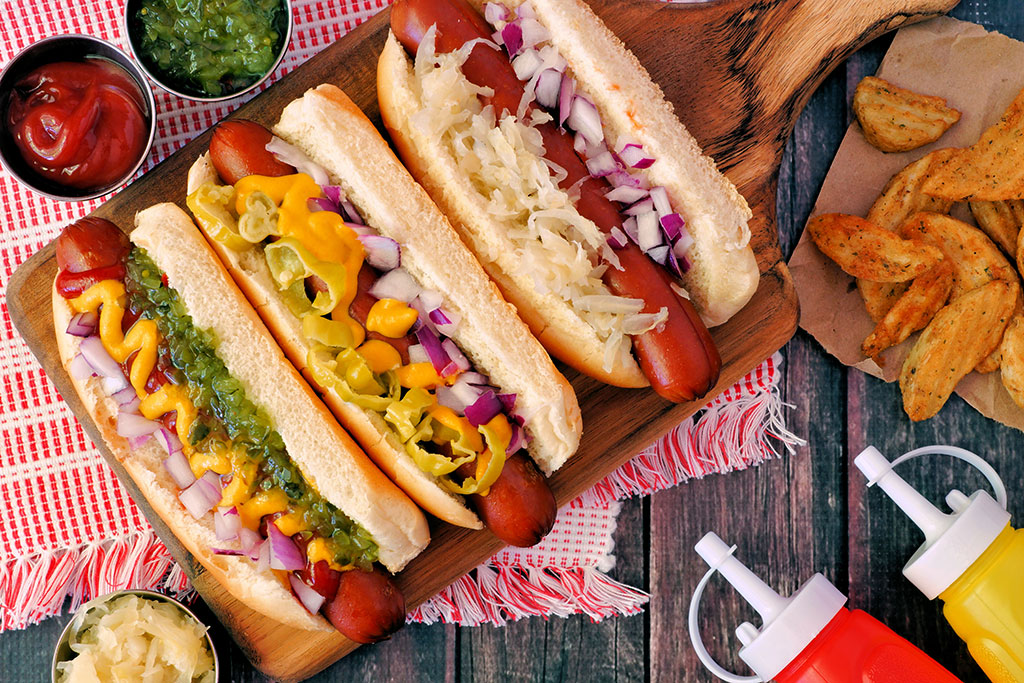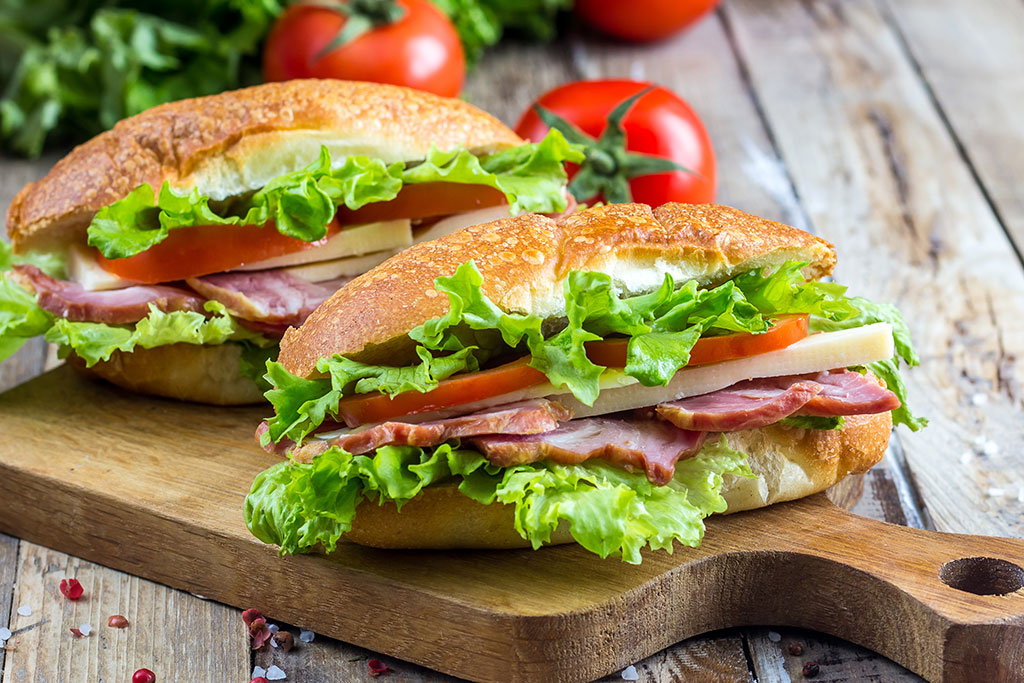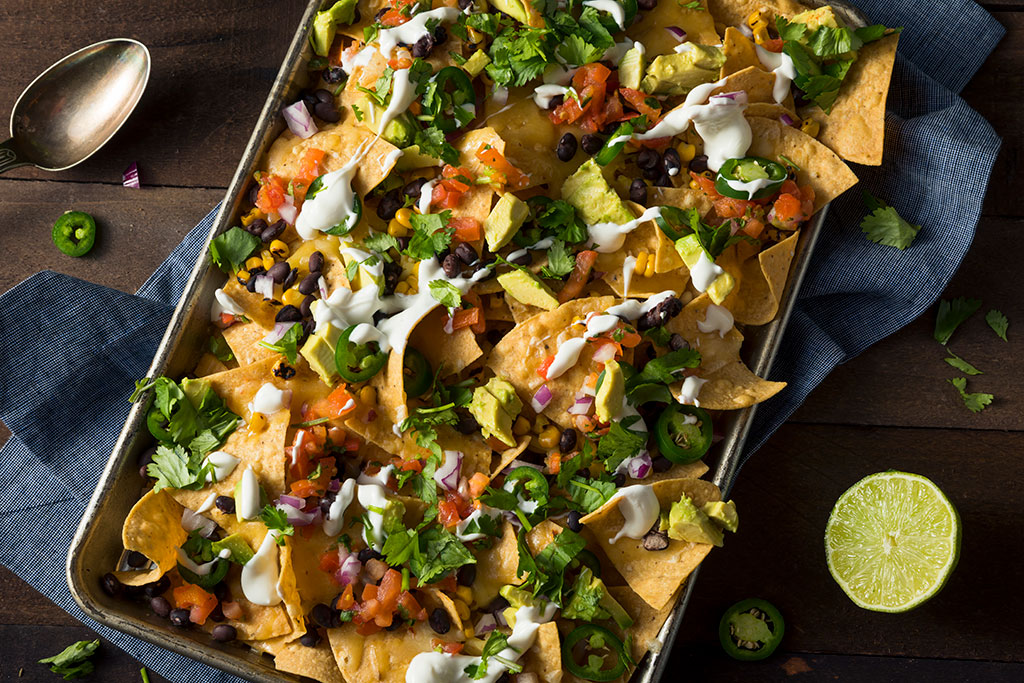The History of Popular Foods

Whether it’s a homey tale of a grandmother’s arduously tested recipe—featuring ingredients no one would dare substitute—or a dour story of plastic-wrapped chemical concoctions coursing down a conveyor belt, there is a history to every food we eat.
Dishes that seem endemic to America today once began as a spark in one person’s imagination or a culture’s collective culinary experiments. Here are some of the fascinating—and potentially clashing—origin stories of our country’s most celebrated fare.
Pizza
Beginning with what is unquestionably a nationwide favorite, pizza can trace its origins to southern Italy. Picture it: Naples in the 1700–1800s, a flourishing trade city in the Mediterranean with a bustling working class in need of cheap, accessible food on the go. To satisfy the public’s hunger, informal restaurants and street vendors crafted rudimentary pizzas—flatbreads layered with some combination of tomatoes, cheese, and olive oil, plus toppings like garlic and anchovies. When Italy’s Queen Margherita visited Naples in 1889, she requested a version of the pizza we may recognize today, one made with soft, white cheese, tomatoes, and basil. As the queen’s order gained popularity, this once-peasant food captured hearts throughout Italy.
The first pizzas sold in the United States, meanwhile, may be attributed to G. Lombardi’s pizzeria in Manhattan, which developed a unique New York–style pie back in 1905. Its winning flavors have since made pizza a staple of the American diet.

Hot dogs
This may seem like an obvious German import, but the greasy, steaming, messily topped hot dog as we know it today has an even messier history. For details, we must naturally seek the knowledge of the National Hot Dog and Sausage Council (NHDSC), which, despite its preeminence, can’t quite come to a single conclusion.
In one tale, the frankfurter was the work of Johann Georghehner, an inventive 1600s butcher who traveled to Frankfurt to promote his tasty new sausage recipe. Then again, the people of Vienna, Austria, a city locally referred to as “Wien,” assert that their predecessors popularized the “wiener” that eventually became the American hot dog. Bavarian street vendor Anton Feuchtwanger and his brother-in-law could deserve credit for inventing the hot dog bun in 1904 as an edible apparatus for holding scalding hot sausages, but you could also thank Charles Feltman, a German baker in Coney Island who sold dachshund sausages in milk rolls way back in 1871. As for the origin of the term “hot dog,” the NHDSC also offers many possibilities. Perhaps the most popular is that cartoonist Tad Dorgan coined it as a casual reference to the steaming dachshund sausages being sold at New York’s Polo Grounds.
Ultimately, the jury is out on who to credit for this food and its regional variations; several restaurants make claims to originating recipes such as the Chicago dog with its requisite pickle spear or the sloppy, Southern-style chili dog. This essential ball-game and fair food may be shrouded in mystery and rumors that dilute its true origins, but it’s nonetheless fun to speculate about who, where, and why this food shaped into the form we relish today.

Sub sandwiches
Whether you call it a sub sandwich, hoagie, hero, or grinder—and don’t you dare order one using the wrong term in the wrong region—this handheld meal is a favorite of delis and even certain convenience stores nationwide. Because subs (the term I will settle on) are members of the sandwich family, they were technically born from the Earl of Sandwich, an eighteenth-century gourmand who enjoyed his servings of meat between two slices of bread.
But when Italians immigrated to America, they reworked sandwiches into long, soft-yet-dense “subs” stuffed with cheeses, veggies, and thin slices of cured meats. The most popularly believed originator of these sandwiches is Benedetto Capaldo, a shopkeeper who fed them to hungry naval shipbuilders in New London, Connecticut, sometime around World War II. “Once the sub yard started ordering five hundred sandwiches a day from Capaldo to feed its workers, the sandwich became irrevocably associated with submersible boats,” writes Sam Dean for Bon Appétit. However, this story is yet to be verified and may simply be an urban legend.
As for the sandwich’s many other names, they developed regionally and have some unusual origin tales. A fun example is the term “hero,” supposedly coined by a New York Herald Tribune food critic named Clementine Paddleworth, who found the sub sandwich so astoundingly large that “you had to be a hero to eat it.” A common myth goes that “hero” is the Americanized pronunciation of the Greek food “gyro,” but this meal featuring rotisserie meat and vegetables wrapped in pita bears little resemblance to our modern vision of a hero.

Nachos
This party favorite is a frequent accompaniment to football games and parties, and it’s practically a requirement beside certain lime-flavored libations. Grab a corner of a chip, dip into the cheesy sauce, and capture your favorite toppings: beans, guacamole, salsa, or even shredded cuts of marinated beef.
The popular snack has roots in the town of Piedras Negras, Mexico. Back in 1943, Ignacio Anaya García, nicknamed “Nacho,” threw it together for hungry wives of US soldiers at the Victory Club restaurant. His delightful hodgepodge included totopos (fried corn tortilla chips), Colby cheese, and pickled jalapeños, which he baked until steaming hot. Though not an official restaurant dish (he was simply covering for an understaffed kitchen), García’s recipe soon became a local favorite known as “Nacho’s Special,” and it was eventually peppered into menus at Tex-Mex restaurants. In the 1970s, a businessman named Frank Liberto premiered this snack at Texas Rangers games; when he started selling them at Dallas Cowboys games a few years later, they hooked audiences across America.
To this day, Piedras Negras boasts of its invention—so much so that it hosts an annual Nacho Fest for locals and tourists alike. This tasty celebration invites diners to come and unite around a universal tradition, one that defies borders: indulging in delicious food.

27 Views



